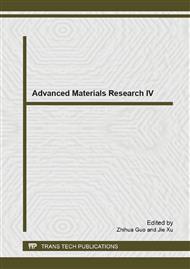p.121
p.125
p.129
p.134
p.138
p.143
p.149
p.154
p.158
An Improvement in Tarnish and Corrosion Resistance of 94Ag-4Zn-Cu Alloys with Sn Addition
Abstract:
The tarnish and corrosion resistance of 94Ag-4Zn-Cu-Sn alloys and Ag-5.89Sn alloy compared with Ag-5.95Cu alloy were investigated. The tarnish results show that the DE* value of Ag-5.95Cu alloy is higher than those of 94Ag-4Zn-Cu-Sn alloys and Ag-5.89Sn alloy due to the sulfide formations such as Ag2S, Cu2S and CuS. The DE* value significantly decreases with increasing tin content. This is attributed to the matrix enrichment of tin which protects the sulfur reaction on surface. From corrosion test results, 94Ag-4Zn-Cu-Sn alloys and Ag-5.89Sn alloy provide the noble shift in the corrosion potentials and pitting potentials but the negative shift in the corrosion current density compared with Ag-5.95Cu alloy. Corrosion rate of 94Ag-4Zn-Cu-Sn alloys and Ag-5.89Sn alloy decrease markedly compared with Ag-5.95Cu alloy because it depends on the alloying elements and the microstructural changes. Due to high solubility of zinc and tin, the microstructures of tin-rich alloys consist of the higher portion of single phase and less eutectic structure than that of Ag-5.95Cu alloy.
Info:
Periodical:
Pages:
138-142
Citation:
Online since:
February 2014
Keywords:
Price:
Сopyright:
© 2014 Trans Tech Publications Ltd. All Rights Reserved
Share:
Citation:


